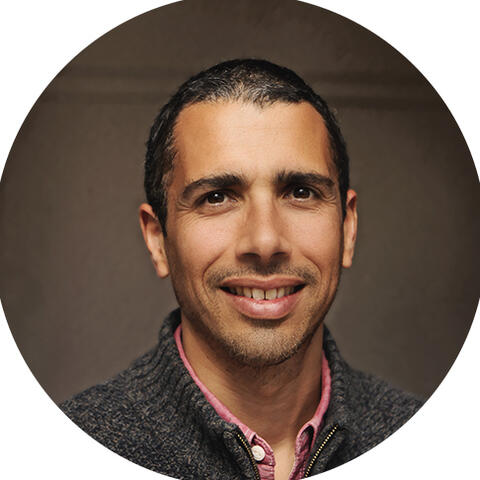Abstract:
The article guides readers through building an independent, or "indie," work life that aligns with personal values and well-being rather than simply maximizing income. Drawing from personal experience—such as the author’s transition from hectic city living to slower mornings in the garden and afternoons spent on carpentry—the piece emphasizes that successful indie routines are unique, shaped by individual motivators like autonomy and purpose, and grounded in realistic assessments of needs and boundaries. It offers practical strategies, including visualizing an ideal day, mind mapping, backward planning inspired by a physics background, and mapping milestones on a Gantt chart to break large goals into actionable steps. The article highlights the importance of simple tools, regular peer check-ins, and resilience strategies like monitoring well-being and having clear backup plans with defined triggers. Ultimately, it underscores that an intentional indie work path is built on clarity, incremental progress, and routines tailored to personal fulfillment, with visible plans and ongoing accountability helping to maintain momentum and prevent burnout.
Getting started on an indie work path often feels messy. Advice piles up, but clarity stays out of reach. The wish for more freedom mixes with worry about money and the fear of swapping one stress for another. The first month after quitting my CTO role, I woke at 3 a.m. fearing my bank app. My goal has been simple: shape work that fits real life, not just the bank account. But turning that idea into days that actually work takes clear vision and small, steady steps.
The best indie routine is never a copy of someone else’s plan. It grows from tiny details that matter to you: the feel of your mornings, room for hobbies, freedom to tweak things when life shifts. Over time, I learned that a grounded vision, based on personal priorities, keeps momentum without burnout. What follows is the way I make that vision real.
Define your ideal indie work
Picture your best indie workday and week
Close your eyes and sketch a normal day. Do you start with email or sunshine and coffee? When do hobbies and friends fit? Back when I lived in Berlin, morning runs along the Spree shaped my rhythm; now, Lisbon’s ocean breeze does the job. My own picture changed a lot. After years in big cities, I now aim for slow mornings in the garden, a bit of carpentry after lunch, laptop work later on. Flexibility, well-being, and time to tinker are the real currency for me. A clear picture of daily life acts like a compass. It keeps outside noise from hijacking the plan.
Put your ideal scenario on the map
Turn the sketch into something you can see. A quick mind map or digital vision board helps. Lay out the first month: projects, hobby time, morning rhythm. Visual notes highlight priorities you might miss and remind you what to protect beyond money.
Name the motivators that matter most
Motivation often sits deeper than cash. For many tech folks, it is about autonomy, purpose, and lower stress. When you know the real drivers, you stop chasing goals that belong to someone else.
Ground your vision in reality checks
Dreams need borders. Look at where you live, who depends on you, the minimum income that keeps panic away. A simple budget or back-of-envelope plan shows what is possible and what is not. Clear limits make the next steps realistic.
Find your true motivators and set boundaries
List the non-negotiables that keep you healthy. It could be a meeting-free morning, one tech-free day each week, or never skipping exercise again. Past frustration is a good teacher. Ask, What drove me nuts before and how will I avoid it now? Share the plan with someone who tells you the truth. Outside eyes spot blind spots fast.
Break big goals into steps with backward planning
Work backward from your indie vision
Start at the finish line and trace steps back to today. My physics background pushed me toward this habit. I describe the result I want, then list milestones in reverse order. It shows every dependency and hides nothing important. In my 2022 Lisbon pilot, reverse mapping cut unplanned tasks by 18%.
A clear and possible vision is the only catch. If the target is blurry, the plan skips messy details. I run a short peer check every two weeks to stay flexible and honest.
Surface the essentials and avoid hidden blockers
Common indie traps include:
- Health insurance
- Stable income buffer
- Reliable workspace
- Legal and admin basics
- Ongoing learning and community
A fast self-audit helps:
- Do my savings cover minimum costs for a few months?
- Is my workspace ready for daily use?
- Did I sort health cover options?
- Are admin tasks organised?
- Who is my regular check-in buddy?
With those essentials clear, I jump into visual planning.
Watch mindset traps too. Sunk cost bias keeps people tied to old roles or half-baked ideas. If a task feels useful only because of past effort, step back and rethink.
Make your roadmap real with a simple timeline
Map your milestones in reverse to see the big picture
Place the goal on the far right of a simple timeline (think coloured blocks on a spreadsheet), then add the step that comes just before it, then the one before that, and so on. Even a spreadsheet works. The chain of tasks makes clear why today’s action matters.
A simple example makes the process less daunting
Say you want a four-day workweek. Anchor first four-day week at the right edge. Work backward:
- Client schedule agreed
- Health insurance sorted
- Budget updated
Arrows show what depends on what, so bottlenecks pop out early.
Sidebar: Lisbon Buffer CalculatorCost of living (1,850€) x 4 months = 7,400€ cash cushion.
Flip your chart to move from dream to weekly actions
Now read the chart left to right. Turn each milestone into a weekly sprint. I block a half hour every Friday to adjust dates and keep the plan current.
Digital tools keep you on track and adaptable
Trello, Asana, or Notion all work. Start simple. Fancy features can wait. The best tool is the one you open every day.
Templates and low fuss options to get started fast
Start with a simple template or go analog
Milestone Depends on Deadline Check in Finalise health insurance Research options Jun 10 Peer review Set four day schedule Client agreement Jun 15 Self check Arrange admin paperwork Schedule set Jun 20 Coach callUse what fits, whiteboard or sticky notes
A wall of sticky notes can beat any app. Move tasks around, cross out what no longer matters, keep the logic visible.
Build resilience with review points
Use well-being as your early warning trigger
Money is loud, but stress whispers first. I run a quick monthly check on energy and mood. A simple 1 to 10 scale in a notebook shows trends. In Berlin, my 1-to-10 journal showed a 2-point dip two weeks before I burned out—now I act sooner. If scores dip for three weeks, I pause and adjust. Peer calls add honesty I might miss alone.
Shape backup plans around the life you want to protect
Plan B should still honor autonomy and health. Some switch to a portfolio of small gigs. Others downshift hours for a season. Define clear triggers:
- Income below basic budget two months in a row (for me, if monthly net drops below €3,200, I revert to interim consulting)
- Work hours above limit for four weeks
- Stress score up 30 percent for three weeks
When a trigger hits, the backup activates without drama.
Sequence your last handoffs for a clean exit
In Berlin, during my last notice period, I blocked out my final week for handoffs. I delivered all code repositories on Wednesday, ran a walkthrough with the new lead on Thursday, and handed over admin logins and documentation by Friday noon. This left two days to answer loose questions and clear my desk—no last-minute chaos.
A slim exit checklist keeps energy for the next phase:
- One-page notes per project
- List of critical contacts
- Remove or transfer all digital access
- What I am no longer responsible for list
Good enough beats perfect. Extra polish often helps old projects more than your new life.
Keep yourself aligned with ongoing accountability
After the exit, drift is the real enemy. A thirty-minute peer call every other week to review wins, blockers, and next steps keeps momentum. A shared doc tracks small milestones. Progress, not perfection, is the aim.
An indie work life grows from knowing what makes your days feel right: slow mornings, honest work, room for hobbies, and the ability to pivot when life changes. Visible plans, small weekly actions, and regular check-ins guard against burnout and keep the journey yours.














